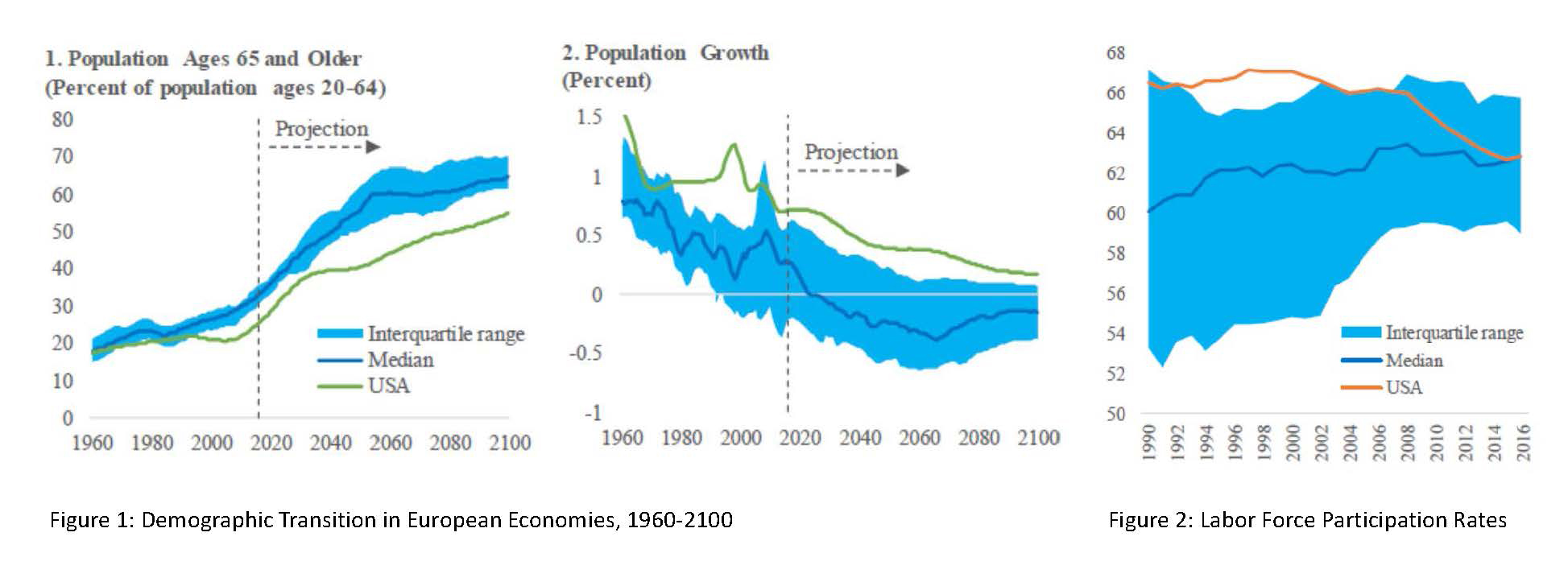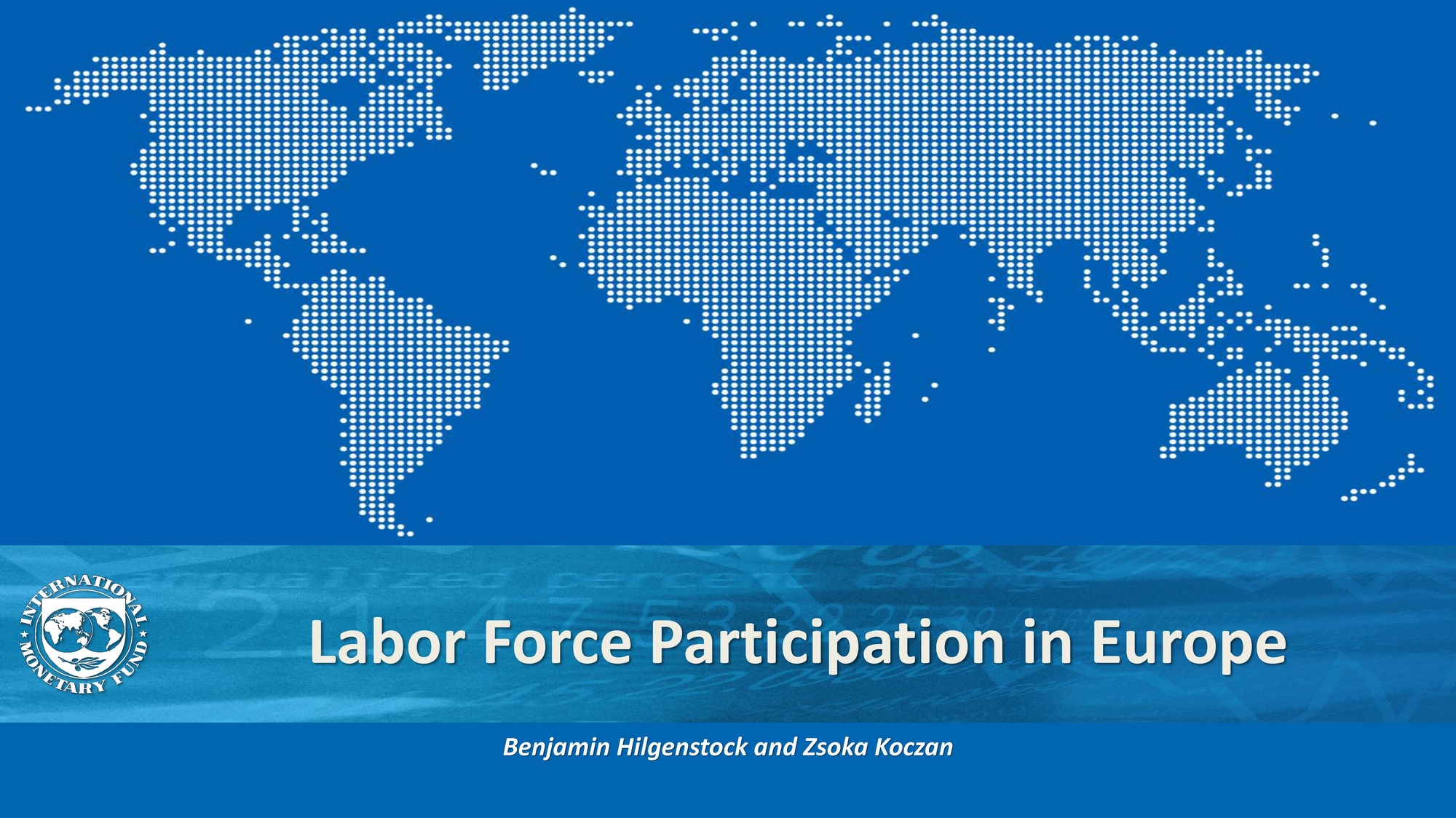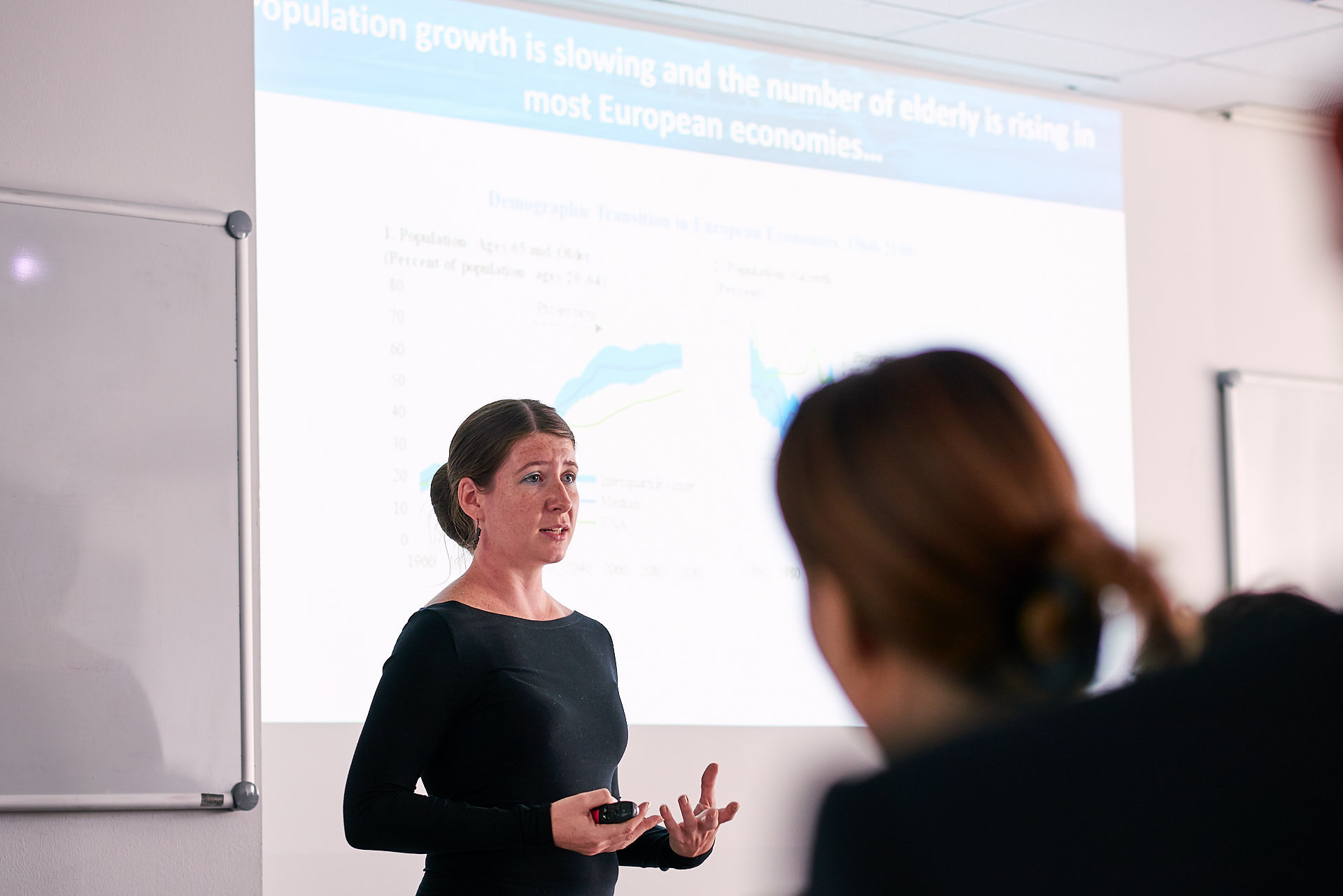Summary
On September 4, 2018, the JVI hosted a public lecture on “Labor Force Participation in Europe” by Ms. Zsóka Kóczán, Economist in the IMF Research Department. She examined the evolution and drivers of labor force participation (LFP) in European regions and US states and metropolitan areas, focusing on the effects of trade and technology. She also discussed how international migration might affect labor force participation in advanced European economies. The presentation was based on her joint research with Benjamin Hilgenstock and motivated by the work done for Chapter 2 of the April 2018 World Economic Outlook (see below for links to the WEO chapter and papers).
Ms. Kóczán began by comparing LFP in European regions and the United States. Since the 1960s, slowing population growth coupled with rising life expectancy have been pushing up dependency ratios in most European countries (see Figure 1). As a result, by 2050 dependency ratios are projected to reach 50 percent in more than 75% of those countries. Though the situation in the United States appears somewhat better, the trends are similar. These negative trends can put a damper on LFP rates, and thus on potential growth and the sustainability of social insurance systems. So far, however, most European countries have seen LFP rise and there has been some convergence (Figure 2). This contrasts with the declining U.S. participation rates.
Ms. Kóczán further shed light on regional drivers of changes in LFP rates, emphasizing two novel measures of trade and technology: local exposures to (1) routinization and to (2) offshoring—which are often highly correlated. Cross-sectional analysis of changes in LFP in U.S. metropolitan areas between 2000 and 2016 suggests that trade and technology, captured using these exposures, have a significant negative effect on LFP. Metropolitan areas with higher initial exposures to routinization and offshoring due to the occupational composition of local employment have seen LFP decline more; automation and offshoring may have permanently displaced some workers. Nevertheless, their impact on the economy could still be positive via productivity gains or creation of jobs in other sectors.
These measures of trade and technology, Ms. Kóczán said, accounted for about half of the U.S. decline in labor force participation. Yet it appears from a similar analysis of European regions that trade and technology affected LFP there positively. One possible explanation, she said, is the fact that since the early 2000s European countries have had smaller changes than the United States in their occupational structure, so fewer jobs were subject to automation and offshoring. Another explanation might be the “second worker effect”: a second household member may have joined the labor force to compensate for lost income.
In the second part of her presentation Ms. Kóczán concentrated on how migration was affecting labor force participation in advanced European economies. With demographic trends worsening, since the mid-1980s net migration has accounted for about half of the population growth in advanced economies. Yet receiving economies have concerns about migrant integration and access to labor markets.
Ms. Kóczán highlighted the impact of differences in the age profiles of migrants and natives. Migrants are more likely to be of prime working-age; they usually arrive after completing their education and often leave as they retire. This tends to increase overall participation rates.
Turning to factors that could boost the participation of both natives and migrants, Ms. Kóczán highlighted the returns to education generally. She then noted that in advanced European economies migrants, especially women, tend to be less educated than natives, and, in addition to this, the positive impact of education on their LFP rates seems to be significantly lower as well.
This could be due to difficulties migrants face in having their qualifications recognized. Ms. Kóczán’s research compared countries with favorable policies for recognizing migrants’ educational qualifications (e.g., Belgium, Germany, Netherlands) and those with unfavorable policies (e.g., Austria, France, Greece). In terms of completion of upper secondary education, in countries with favorable policies differences between natives and migrants are smaller. Favorable policies increase the positive effects of tertiary education on the odds of participating for both natives and migrants, both men and women, though do not reduce the gap between the two.
Ms. Kóczán concluded her presentation by highlighting the importance of migration in alleviating the pressures of an aging population, given the age composition of migrants. She also acknowledged the gains in LFP obtainable from favorable policies like recognition of educational qualifications or language training.
Maria Arakelyan, Senior Research Officer, JVI

















